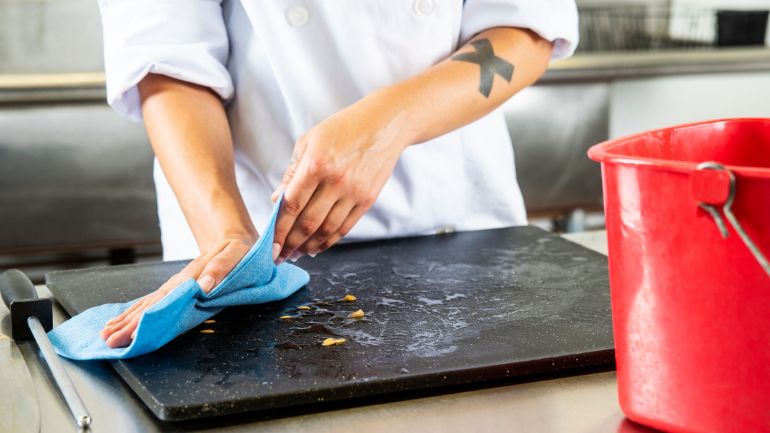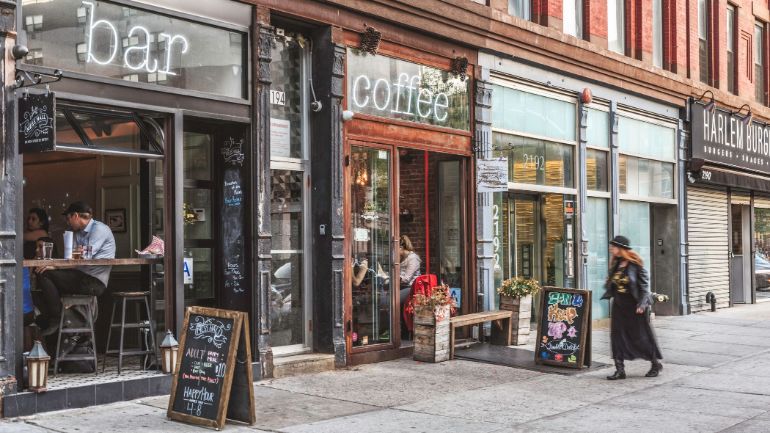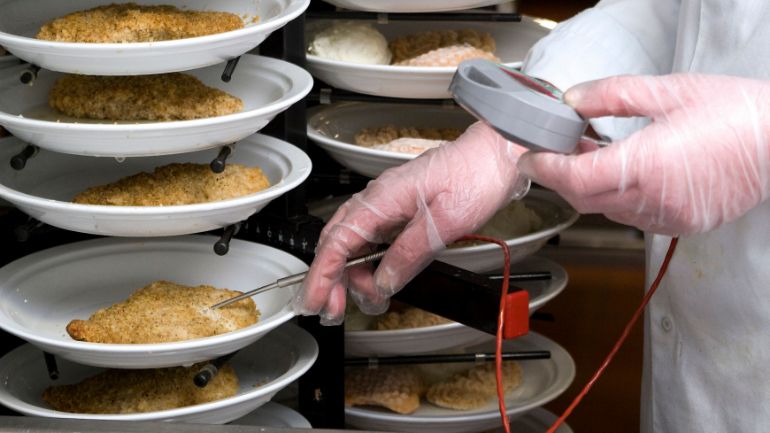Why did you venture into the restaurant industry? Was it to share your family’s incredible recipes with the world, or maybe to create a space where people could build memories around food and friends?
Most likely, you became a restaurateur to pursue your passions and not to have to deal with the bureaucracy of permits.
Licenses and permits are the less-than-sexy side of owning a restaurant, but they’re critical to ensuring your venue provides customers and staff with a safe and healthy experience.
While most licensing requirements vary from country to country and city to city, a food handlers permit is a must-have for all restaurants in the United States and Canada.
This article gives you the scoop on:
- What a food handlers permit is
- Why a food handlers permit is necessary
- Who within a restaurant needs a food handlers permit
- How to get a food handlers permit (including specific instructions for NYC, Chicago, LA, Toronto, and Vancouver)
- How to keep your food handlers permit up to date
The sooner you nail down restaurant laws and regulations, the sooner you can get back to the fun side of owning or working at a restaurant. Let’s get started!
What Is a Food Handlers Permit?
In the U.S. and Canada, any business that handles, processes, or serves food needs a food handlers permit to operate lawfully. A food handlers permit is also often referred to as a food handlers license, food handlers card, or food handlers certificate. We’ll use the terms interchangeably throughout this guide.
Obtaining a food handlers card involves taking a course (usually online) and passing an exam that covers food safety, sanitation, personal hygiene, allergens, and food temperature.
Some municipalities require at least one certified food handler to be on-site at a restaurant at all times, while others require any employee who comes into contact with food to obtain a permit.
Unfortunately, there are no universal laws regulating food handlers certificates, so it’s up to local governments to set their own rules. Lucky for you, we’ve rounded up the regional food handlers permitting laws for North America’s top five foodie cities. Keep reading for all the details.

Why Is It Important to Have a Food Handlers License?
A food handlers permit is one of the licenses you need to legally operate a restaurant. Inspectors routinely visit restaurants to ensure that they have valid permits and are implementing safe food practices. Get caught without the proper permits and your restaurant could get written up, have to pay a fine, or even be shut down. No bueno.
Beyond the legal ramifications, a food handlers certificate shows diners and inspectors that your restaurant knows how to prevent food borne illness. When your employees hygienically handle food, your customers will leaving feeling happy, rather than queasy from food poisoning.
The bottom line is that a food handlers license, and the implementation of safe food handling, lets your restaurant stay in business.
Who Needs a Food Handlers Card?
There is no universal regulation that covers food handlers cards, so you’ll need to check with your state, province, or municipality for details on who in your restaurant needs one.
In general, most permits require at least one certified food handler to be present at the restaurant at all times. Owners and managers make good candidates for certification because they’re usually on-site. It’s also a good idea for someone whose main duty involves preparing food, like a chef or line cook, to get a food handlers license.
Even if it’s not legally required for all of your food handlers to obtain permits, it’s important to train them on how to practice good hygiene and safely handle food for the longevity of your business and safety of your guests.
Some states require anyone who handles food or works at a restaurant to get a food handlers license. Texas, for example, requires all employees who work with “unpackaged food, food equipment or utensils, or food-contact surfaces” to complete food handler training.
Keep reading to learn how to get a food handlers license in your neck of the woods.
How to Get a Food Handlers Permit
So how do you get a food handlers permit?
While the laws and processes vary based on where your restaurant is located, here are the general steps you’ll need to take to obtain a food handlers permit, whether you’re a restaurant owner, manager, or employee.
- Check your local laws. Find out your area’s certification requirements. See if your country, state, and city have specific laws about food handlers permits. Don’t know where to look? A simple Google search (for example: “food handlers license nyc” or “food handlers permit texas”) will send you in the right direction. Government websites are your best bet for accurate and current information. If both your state AND city have their own laws about permits, follow the strictest laws.
- Pay attention to deadlines. If you are a restaurant owner or manager, pay attention to local deadlines for permitting employees. For example, Texas requires food handlers to obtain their licenses within 60 days of employment, while Illinois requires licensing within 30 days. Let new hires know the rules so that they can get a food handlers permit in time.
- Take the food handlers course. Next, you and/or your employees will need to take a food handlers course. Check your local laws to see which courses are accepted in your area. ServSafe’s Food Handler course is accepted in all 50 states and costs only $15, inclusive of the final exam. Take your studies seriously, as ServSafe’s final exam can only be taken up to three times.
- Pass the exam. After you’ve completed your coursework and studied for the exam, take your municipality’s food handlers permit exam. Some areas administer the tests in person. If you take ServSafe’s Food Handler course, you can take the exam online. ServSafe’s online test consists of 40 questions and has no time limit. You’ll need to answer 75% of the answers correctly to pass.
- Get your food handlers certificate. Once you pass the exam, you are officially a certified food handler – congrats! Permits typically come in the form of a certificate or a card. Some certificates can be printed online, while others are mailed or presented to you upon the completion of an exam. Whatever the case, make a copy of your food handlers certificate for your employer to keep on file.
If you work or operate a restaurant in New York City, Los Angeles, Chicago, Vancouver, or Toronto, stay tuned for specifics details about how to obtain a food handlers card in your city.

How to Get a Food Handlers Certificate in NYC
New York City’s Department of Health and Mental Hygiene requires that “supervisors in any food service establishment, including non-retail and temporary food service establishments” have a Food Protection Certificate. A certified food handler has to be on-site at all times and supervise all food preparation while the restaurant is operating.
In order to obtain a Food Protection Certificate, you must take a 15-hour Food Protection Course online (free course, plus $24 for the exam) or in person ($114 for the course and the exam). Exams are only done in person.
NYC Food Protection Certificates have no expiration date, and you can retake the exam as many times as you need to pass it.
How to Get a Food Handlers Permit in Chicago
According to the Illinois Restaurant Association, anyone who prepares, stores, or serves food, or handles food utensils, food equipment, or food contact surfaces in a restaurant in Illinois must have a food handlers permit within 30 days of being hired.
Who does this affect?
Chefs and servers are obvious candidates, but this law also applies to bussers, dishwashers, hosts who handle food, bartenders, and managers.
Illinois encourages food handlers to obtain their food handlers license through ServSafe’s Food Handler program (or any other ANSI-certified program). The online course and exam cost $15.
Once an employee receives their food handlers certificate, they must give their employer a copy to keep on file.
Chicago food handlers need to renew their permits every three years.
How to Get a Food Handlers Certificate in LA
All employees who “are involved in the preparation, storage, or service of food in a food facility” in California are required to obtain a California Food Handler Card (CFH Card) within 30 days of being hired.
Los Angeles food handlers can get their CFH Cards by taking a course and passing an exam through an ANSI-accredited program, which includes ServSafe.
ServSafe’s course takes about 90 minutes to complete. The exam consists of 40 questions and you’ll need to answer 75% of the questions correctly to pass. ServSafe’s online food safety course and exam cost $15.
This certification needs to be renewed every three years.
How to Get a Food Handlers License in Toronto
Own a restaurant in Toronto?
You’ll need a certified food handler overseeing every area of your restaurant where food is being prepared, packaged, processed, stored, or served at all times.
Toronto’s Food Handler Certificates can be obtained in one of two ways. A restaurant employee can take a 6-hour course and exam in-person at one of the city’s training locations for $112.07 CAD. The second option is to study the Ontario food handlers manual at home and take the exam in-person for $60.70 CAD.
Food Handler Certificates are valid for five years in Ontario.
How to Get a Food Handlers Permit in Vancouver
Food safety regulations in British Columbia require at least one FOODSAFE certified employee to be on-site at all times. Food handlers such as chefs, servers, bussers, and dishwashers in Vancouver should complete the FOODSAFE Level 1 course, which can be taken in a classroom setting for $65 to $85, online for $115, or at home via correspondence for $105.
FOODSAFE certificates are valid for five years, upon which food handlers must take an online refresher course for $55.
How to Keep Your Food Handlers Card Up to Date
Obtaining your food handlers permit is just half the battle. Once you have your certificate, you have to keep it up to date. This is how you can maintain your food handlers permit.
Renew Your Food Handlers Permit
Most food handlers certificates expire after a few years. ServSafe food handlers cards, for example, last three years. Check your local laws to see when you need to renew your license and what this entails.
Generally, renewing a food handlers permit requires re-taking a food safety course and exam, or taking a refresher course and exam.
As a restaurant owner, make sure to check the expiration dates of your staff’s food handlers’ permits and remind them when it’s time to renew them so that you never get put in a sticky spot when an inspector comes to visit.

Pass Food Safety Inspections
Food safety inspections vary from state to state and city to city.
In general, when food inspectors knock on your door, you should cover these bases to ensure that your restaurant is in good standing with the law:
- Have your staff’s food handlers certificates on file and make sure they’re valid. Remind your employees when it’s time for them to renew their food handlers licenses.
- If local regulations require there to be a certified food handler at your restaurant at all times, take precautions to make sure that you are never without one. An easy way to do this is by making sure that you have more certified food handlers on staff than the legal minimum.
- Ensure that your team is implementing proper food safety and hygiene techniques while preparing and handling food. Inspectors check food temperatures, observe food preparation and clean up, inspect food storage equipment, and more. Make sure that your restaurant complies.
Getting and keeping a food handlers permit is not as complicated as it seems. Check your local laws, take a course, pass the exam, and implement good food safety practices to maintain your license.
Once you take care of permitting, you’ll be able to get back to doing what you’re most passionate about, whether that’s creating memories for your customers or creating connections through food.
Download your free employee handbook template
Sign up for our free weekly TouchBistro Newsletter







